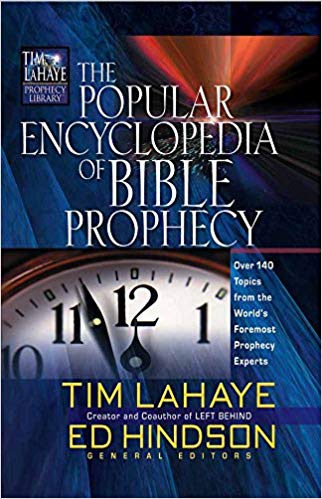AMILLENNIALISM Part II

THE POPULAR ENCYCLOPEDIA OF BIBLE PROPHECY
AMILLENNIALISM Part II
AMILLENNIALISM AND THE CHURCH FATHERS
In the East, Eusebius of Caesarea (263–339), the court theologian to Constantine and theological heir of Origen, was a strong leader in the rejection of apocalypticism. With the rise of Constantine and the adoption of Christianity as the empire’s official religion, alternate perspectives fell into disfavor. Norman Cohn (p. 33) notes, “Millenarism remained powerful in the Christian Church so long as Christians were an unpopular minority threatened with persecution. When in the fourth century Christianity attained a position of supremacy in the Mediterranean world and became the official religion of the empire, the Church set out to eradicate millenarian beliefs.” In the Latin West, Jerome (347–420) and Augustine also reacted strongly to prophetic interpretation. In his commentary on Daniel, written shortly before the year 400, Jerome argued that “the saints will in no wise have an earthly kingdom, but only a celestial one; thus must cease the fable of one thousand years.” Jerome was not alone in his attack on literal interpretation and millennial expectations. In City of God, Augustine repeatedly dismissed any hope for an earthly or physical millennial kingdom. Through the writings of men such as Jerome, Julian
of Toledo, Gregory the Great, and most notably Augustine, literal interpretation of the Bible, and especially Daniel and Revelation, quickly faded. The Augustinian influence in the West eclipsed many perspectives, some orthodox and some unorthodox or heretical. Augustine’s influence was so strong that it remained in force for centuries. The dominance of allegorical interpretation in the West after the time of Augustine may best explain the seeming lack of a premillennial witness for so much of the church’s history. But millennial thought did not completely cease, and it popped up occasionally upon an ocean of amillennial dominance. At the end of the sixteenth and the beginning of the seventeenth centuries, Johann Heinrich Alsted revived premillennialism and provided an alternative to the dominant amillennialism. Since the early 1600s, amillennialism has remained the only significant view of eschatology within the Roman Catholic and Eastern Orthodox churches, while it has been in steady decline within Protestantism. However, today it still has a small following among some evangelicals and is the dominant view among those within the mainline denominations.
IS AMILLENNIALISM BIBLICAL?
The greatest problem with amillennialism is the fact that the Bible just does not teach it. The text of Scripture clearly teaches that Christ returns in Revelation 19, and then in Revelation 20, He sets up His reign upon the earth for 1000 years. Amillennialists cannot point to any specific passage that teaches their position. Lack of specific biblical support is fatal to amillennialism for any Bible-believing Christian. This explains why amillennialists typically first attack premillennialism and then present broad theological concepts that one must adopt in order to interpret biblical texts so that they “support” amillennialism. Basic to amillennialism is its lack of a consistent hermeneutic. It must abandon the literal hermeneutic of the historical, grammatical, and contextual approach for some degree of allegorization. The amillennialist must supply ideas or concepts that one would not be able to find by simply reading the text. Allegorization, or spiritualization, brings a meaning from outside of a specific text to interpret it rather than basing the interpretation on what is written in that specific passage. Nowhere does the New Testament teach that the kingdom of God came into existence at Christ’s first coming. The New Testament does say that the kingdom
was “near” during Christ’s ministry, but it stops short of saying that it arrived during Christ’s first coming. Furthermore, even though personal redemption is certainly an essential key to the kingdom, it does not negate equally clear teachings concerning the physical nature of this kingdom. It is a both-and, not an either-or issue. The New Testament epistles, written to instruct the church during this current age, do not teach or assume that this age is the kingdom. The New Testament often refers to the kingdom as something that is future rather than present. Paul puts both the “appearing” of our Lord and “His kingdom” in the future in his charge to Timothy (2 Timothy 4:1). The kingdom arrives when the Lord appears at His second coming. Paul is confident the Lord will deliver him “from every evil deed, and will bring me safely to His heavenly kingdom” (4:18). Certainly this deliverance from every evil deed is future. And since it is, then so is His heavenly kingdom. McClain (p. 433) observed: “This expression is not a synonym for heaven, but rather indicates that the long-awaited Messianic Kingdom will be ‘heavenly’ in origin and character as contrasted with earthly kingdoms. It is the closest approximation to the familiar phrase ‘kingdom of heaven’ so frequently used in Matthew’s Gospel.”

